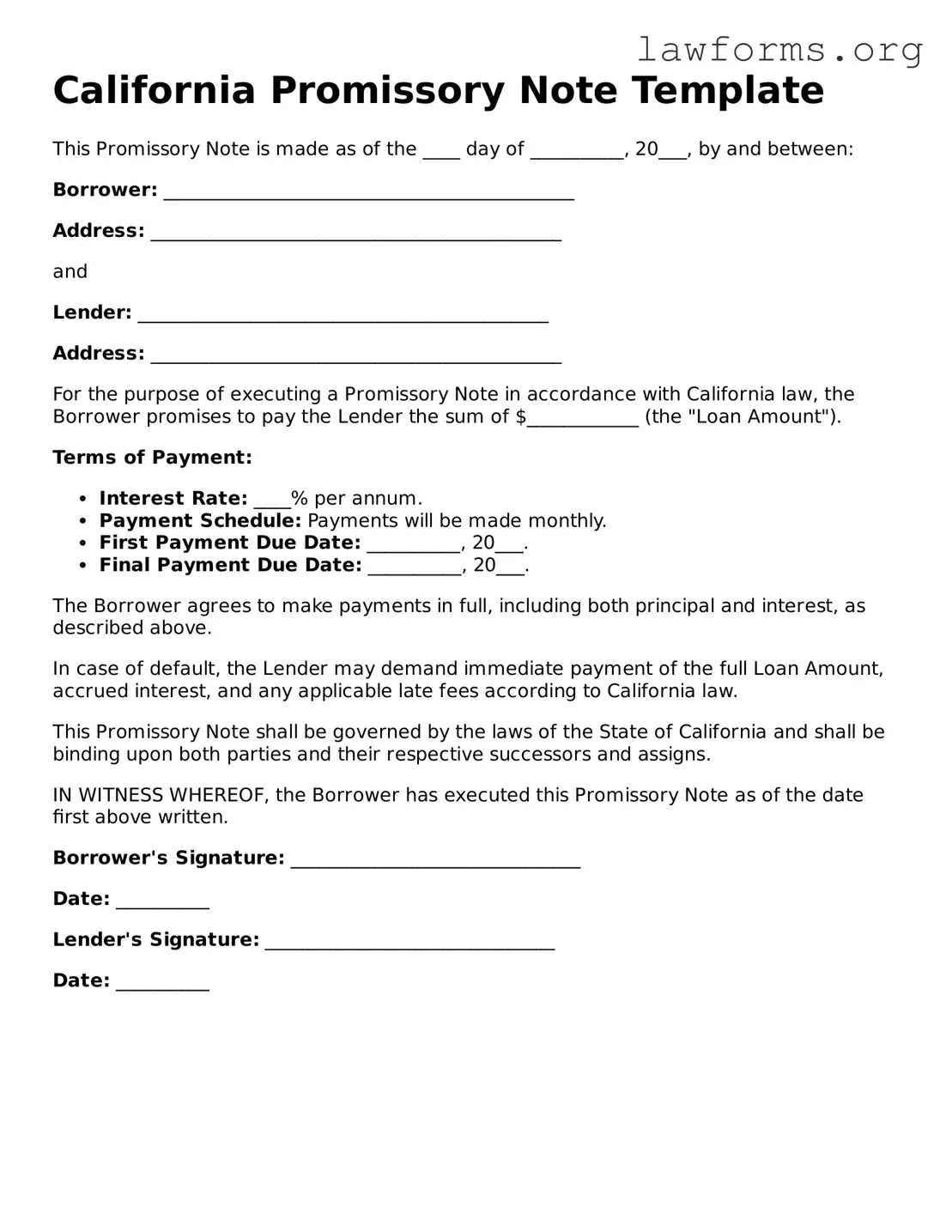California Promissory Note Template
This Promissory Note is made as of the ____ day of __________, 20___, by and between:
Borrower: ____________________________________________
Address: ____________________________________________
and
Lender: ____________________________________________
Address: ____________________________________________
For the purpose of executing a Promissory Note in accordance with California law, the Borrower promises to pay the Lender the sum of $____________ (the "Loan Amount").
Terms of Payment:
- Interest Rate: ____% per annum.
- Payment Schedule: Payments will be made monthly.
- First Payment Due Date: __________, 20___.
- Final Payment Due Date: __________, 20___.
The Borrower agrees to make payments in full, including both principal and interest, as described above.
In case of default, the Lender may demand immediate payment of the full Loan Amount, accrued interest, and any applicable late fees according to California law.
This Promissory Note shall be governed by the laws of the State of California and shall be binding upon both parties and their respective successors and assigns.
IN WITNESS WHEREOF, the Borrower has executed this Promissory Note as of the date first above written.
Borrower's Signature: _______________________________
Date: __________
Lender's Signature: _______________________________
Date: __________
